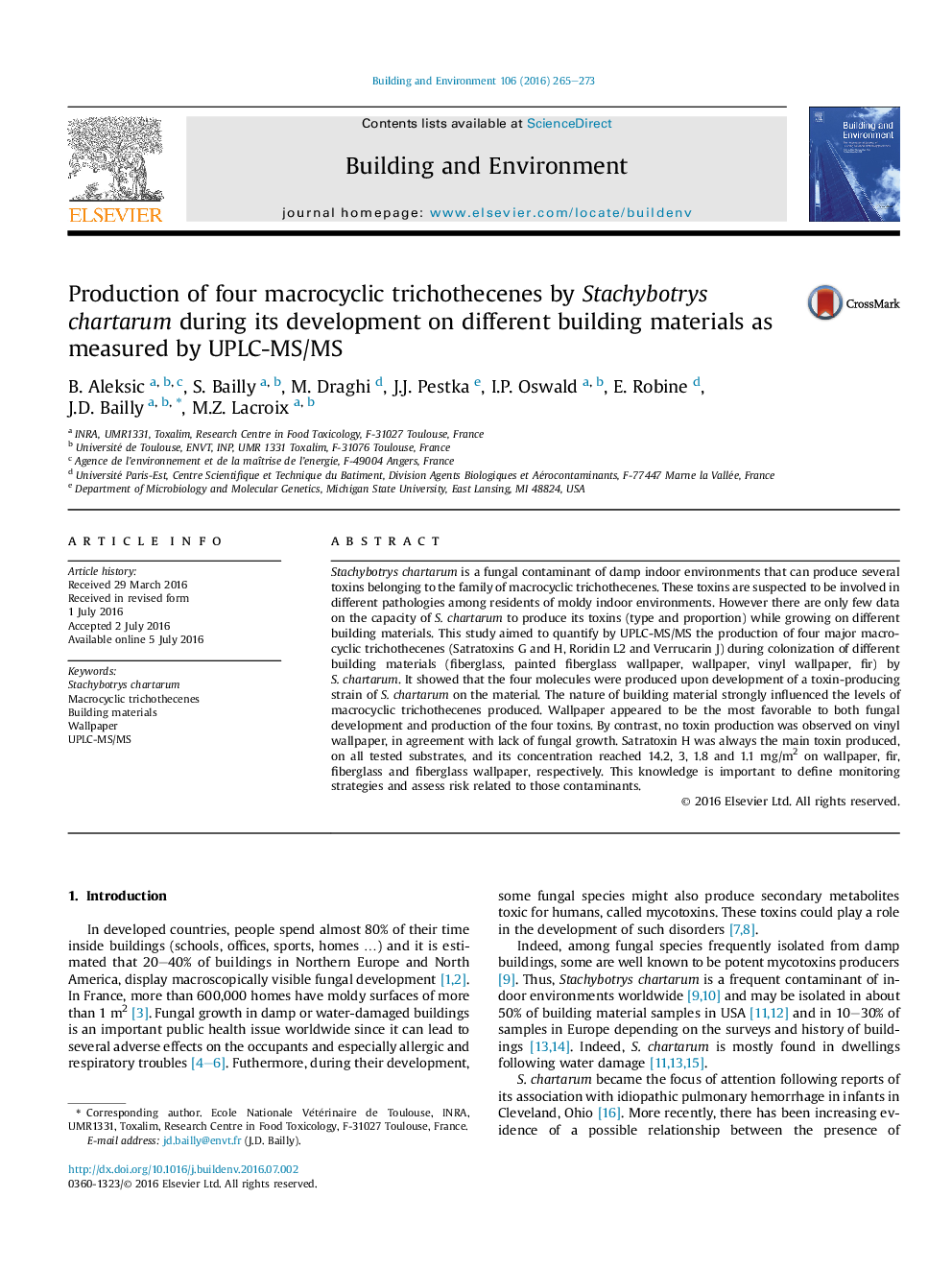| Article ID | Journal | Published Year | Pages | File Type |
|---|---|---|---|---|
| 6698829 | Building and Environment | 2016 | 9 Pages |
Abstract
Stachybotrys chartarum is a fungal contaminant of damp indoor environments that can produce several toxins belonging to the family of macrocyclic trichothecenes. These toxins are suspected to be involved in different pathologies among residents of moldy indoor environments. However there are only few data on the capacity of S. chartarum to produce its toxins (type and proportion) while growing on different building materials. This study aimed to quantify by UPLC-MS/MS the production of four major macrocyclic trichothecenes (Satratoxins G and H, Roridin L2 and Verrucarin J) during colonization of different building materials (fiberglass, painted fiberglass wallpaper, wallpaper, vinyl wallpaper, fir) by S. chartarum. It showed that the four molecules were produced upon development of a toxin-producing strain of S. chartarum on the material. The nature of building material strongly influenced the levels of macrocyclic trichothecenes produced. Wallpaper appeared to be the most favorable to both fungal development and production of the four toxins. By contrast, no toxin production was observed on vinyl wallpaper, in agreement with lack of fungal growth. Satratoxin H was always the main toxin produced, on all tested substrates, and its concentration reached 14.2, 3, 1.8 and 1.1 mg/m2 on wallpaper, fir, fiberglass and fiberglass wallpaper, respectively. This knowledge is important to define monitoring strategies and assess risk related to those contaminants.
Related Topics
Physical Sciences and Engineering
Energy
Renewable Energy, Sustainability and the Environment
Authors
B. Aleksic, S. Bailly, M. Draghi, J.J. Pestka, I.P. Oswald, E. Robine, J.D. Bailly, M.Z. Lacroix,
